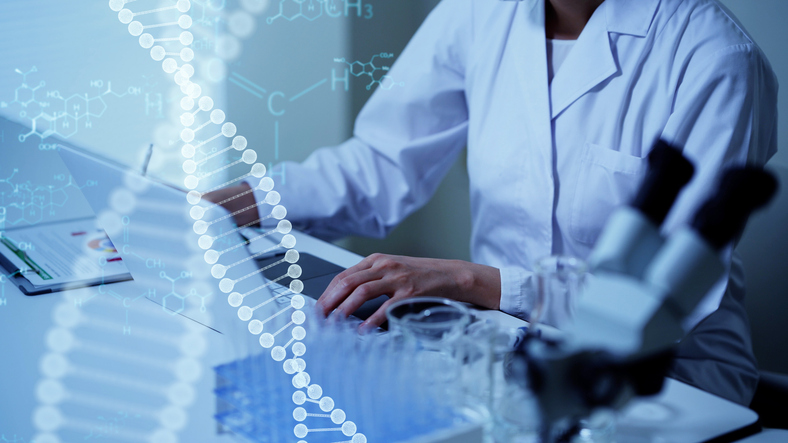Lipopolyplexes are emerging as effective, second-generation, nonviral vectors to deliver gene therapies, yet there are challenges. To resolve them, researchers at the University of Milan have developed high-molecular-weight ternary nanopolymers using a novel microfluidic system.
For this type of delivery vehicle, “Manufacturing is still the main limiting factor…of these nanovectors,” according to a team led by Giulia Anderluzzi, PhD, postdoctoral researcher and first author; Silvia Franzé, PhD, associate professor and corresponding author; and Francesco Cilurzo, PhD, professor and senior author, writing in a recent paper.
Rather than using bulk mixing, Anderluzzi and colleagues developed a two-step microfluidics system. It “formulates polymer-lipid ternary complexes with consistent size and size distribution compared to conventional bulk mixing without the need of any downsizing techniques,” they reported.
Adjusting such process parameters as flow rate ratio, total flow rate, and polymer concentration is the key to consistency. They also added a lipid envelope to the polyplexes to reduce particle size. A staggered herringbone micromixer, they reported, helped them improve mixing efficiency, enhance scalability, and reduce sample dilution.
Lipopolyplexes typically consist of nucleic acid, a cationic polymer, and liposomes. Anderluzzi and colleagues’ vectors used chitosan, poly-L-lysine (PLL), or polyethyleneimine (PEI) to deliver a plasmid DNA encoding a green fluorescence protein. In these studies, they found that the choice of polymer used in the lipopolyplexes determined the particles’ structure and, therefore, cell uptake, endosomal escape, and transfection efficiency.
“Structurally, while chitosan lipopolyplexes appeared as globular core-shell particles of an external lipid multilamellar layer and a dense core of polyplexes, those of PLL and PEI were packed complexes in which a rearrangement among polymer, DNA, and liposomes, and a true interaction between the polymer and the lipids occurred,” they wrote.
While the uptake kinetics of the three types of lipopolyplexes were similar, PEI lipopolyplexes led to the greatest transfection efficiency and, therefore, more endosomolytic activity. Liposomes made the PEI particles less toxic than 1,2‐dioleoyl‐3‐trimethylammonium‐propane (DOTAP) lipoplexes, and the use of microfluidics allowed the team to reduce the nitrogen to phosphate ratio without altering stability.
“Further,” they wrote, “PEI ternary complexes were significantly more potent than the control DOTAP lipoplexes and PLL lipopolyplexes in promoting protein expression in HeLa, HEL-293, and HUVEC [human umbilical vein endothelial cell] lines.” That suggests their potential as a versatile platform for DNA delivery, they added.
Further studies may involve optimizing performance by modifying the surface of these complexes and continuing to improve microfluidic preparation methods.

